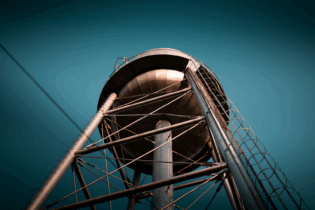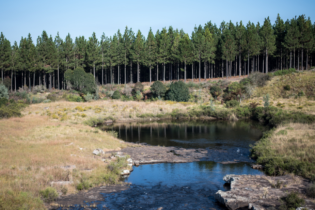Government is pinning hope on its ability to plug leaking pipes, reduce pollution and “stretch” resources to stave off a looming fresh water crisis.
“We don’t want development to be held back by a lack of water, or lack of access to water,” water affairs acting deputy director-general for regulation, Helgard Muller, told reporters in Pretoria on Monday. Speaking at a media briefing following the gazetting of the draft second National Water Resources Strategy (NWRS), he said this was one of the key aims behind the plan, which was open for public comment over the next 90 days. The new NWRS was recently approved by Cabinet. It lays out a strategy for water resources management over the next 20 years, with a particular focus on the period 2013-17. Muller said water planning and implementation needed to be done in time so that South Africa’s growth and development was not hampered. If all sectors worked together, “we can actually prevent such an event”. This would include “stretching what we have”, including the use of more groundwater, the re-use of effluent, desalination, and achieving greater efficiencies. Water Affairs Minister Edna Molewa earlier said a new study showed the funding needed over the next 10 years for new water infrastructure was now R670 billion, up from the estimate of R573 billion she gave earlier this year. “The funding gap is R338 billion over this (10 year) period,” she said. Responding to a question, she said “various mechanisms” were being looked at to raise the money. “We’re not saying it will all come from the fiscus now; we’re looking… at various other mechanisms where there are funds that are not necessarily adequately and properly used, so we can re-channel these.” Molewa said her department was also working on a new tariff policy. “It is highly likely that if we do our billing systems and water metering properly, billing the right people… we will realise income that will not (make it necessary) to have lesser (sic) people paying more for their water.” There might, however, be a need for cross-subsidisation. “It is possible also that as we think through these things, there would be a need to consider some possible cross-subsidisation… in areas where people are not able to afford (water).” The minister said stopping water losses – including unaccounted for water and that lost through leaking pipes – was a priority for her department. According to the NWRS, both the agricultural sector (which uses about 60 percent of the country’s available water) and municipalities (which consume about 27 percent) are losing up to half and more of the water they receive. “In municipalities, non-revenue water sits at more than 37 percent on average, although it is not measured in many municipalities where losses are estimated to be close to 50 percent. In many irrigation and domestic schemes it is worse, with losses of up to 60 percent.“In terms of loss in revenue, these losses account for more than R11 billion a year in the municipal sector alone.”
The document says about 10 billion cubic metres of water are available in South Africa annually. On the inefficient use of irrigation water by farmers, Molewa suggested massive adaptation was needed. This meant, for example, changing mechanisms Ä such as centre pivot irrigation systems – to drip irrigation methods. “We know this is an expensive exercise, but we need to move in that direction… It’s a dire necessity to ensure we don’t have the water losses we have,” she said. Molewa also noted that a “high level of money” was being spent by her department on cleaning polluted water. “Our country is experiencing significant water quality challenges… In addition, our water ecosystems are not in a healthy state. Of the 223 river ecosystem types, 60 percent are threatened, with 25 percent of these critically endangered.” She said preventing such pollution would cut the “high level” cost of cleaning the water to make it fit for consumption. Major contributors to the deteriorating water quality included the mining sector, industry and agriculture, as well as urban development. On bridging the R338 billion funding gap over the next decade, she said sources being looked at included the municipal infrastructure grants, the state-owned Trans-Caledon Tunnel Authority, and off-budget and private sector funding. “That’s where we think… we will be able to bridge this gap, even if we might not be able to close it tightly,” she said. According to the NWRS South Africa’s past 16 years of above-average rainfall was a period that might be drawing to a close. “This trend is unlikely to continue.” It further warns of the water risk facing the country’s economy. “Water risk to business is real. Companies across several industry sectors should start to take the lead in quantifying their exposure to water risk, and should develop plans to mitigate these risks,” it advises. The NWRS notes that while South Africa has world-class water-management legislation, implementation of this “has been slow”. The country is ranked the 30th driest in the world. Source: Sapa






